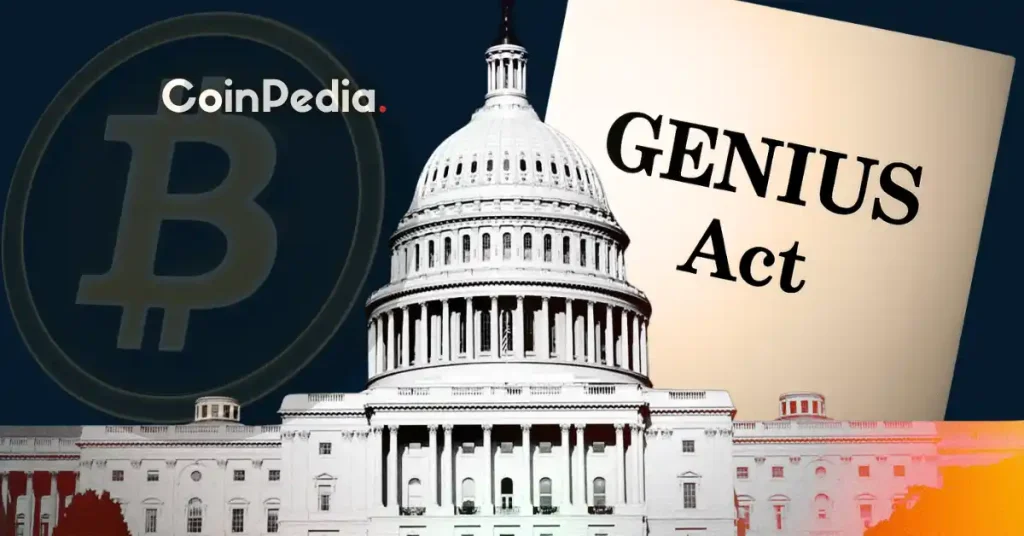US Treasury Seeks Public Input on GENIUS Act Stablecoin Rules



The post US Treasury Seeks Public Input on GENIUS Act Stablecoin Rules appeared first on Coinpedia Fintech News
The US Department of the Treasury is requesting public input on the GENIUS Act . In a notice on Monday, the department said it is seeking opinions on how financial institutions can combat illegal activities involving the case of digital assets.
US Treasury Seeks Public Comments on GENIUS Act
The request is a requirement under the Guiding and Establishing National Innovation for US Stablecoins (GENIUS) Act, which was signed into law by President Trump in July. The public must submit their inputs by October 17.
The Department of Treasury stated , “The U.S. Department of the Treasury invites interested members of the public to provide input on the use of innovative or novel methods, techniques, or strategies to detect and mitigate illicit finance risks involving digital assets.”
Request Focuses on Four Key Technology Areas
The GENIUS Act lists four specific technologies on which Treasury should seek comment:
- Application program interfaces (APIs)
- Artificial intelligence (AI)
- Digital identity verification
- Use of blockchain technology and monitoring
These are the techniques and strategies that the treasury will evaluate and consider. It will oversee the improvements, costs to regulated financial institutions, data collection, privacy risk, operational challenges, cybersecurity risks, and effectiveness of these strategies.
US to Become the Crypto Capital?
This new initiative underscores President Donald Trump’s goal to make America the crypto capital of the world. Reacting to this move by the treasury, Secretary Scott Bessent said in an X post on Monday that stablecoin adoption could lead to increased demand for US Treasuries.
He wrote , “Implementing the GENIUS Act is essential to securing American leadership in digital assets. Stablecoins will expand dollar access for billions across the globe and lead to a surge in demand for U.S. Treasuries, which back stablecoins.”
“It’s a win-win-win for everyone involved: stablecoin users, stablecoin issuers, and the U.S. Treasury Department,” Bessent added.
What’s Next? CLARITY & CBDC Anti-Surveillance State Act
The Digital Market CLARITY Act and the CBDC Anti-Surveillance State Act were passed in the House on July 17 and are now moving to the Senate. If they pass the Senate, they will then go to the President for a signature. While there’s no specific date set, some crypto enthusiasts anticipate September 30 to be the deadline.

Invest $1,000 in These 3 Cryptos the Market Calls the Next Bitcoin (BTC), Projected to Turn Into $1,000,000 by 2026
The post Invest $1,000 in These 3 Cryptos the Market Calls the Next Bitcoin (BTC), Projected to Turn...

Crypto Bull Run May Continue Into 2027, Bernstein Raises Bitcoin Target to $200K
The post Crypto Bull Run May Continue Into 2027, Bernstein Raises Bitcoin Target to $200K appeared f...

Searching for the Best Cryptos to Buy Now? This Under-$0.05 Gem With Real Use Cases Targets $1 Soon
The post Searching for the Best Cryptos to Buy Now? This Under-$0.05 Gem With Real Use Cases Targets...

